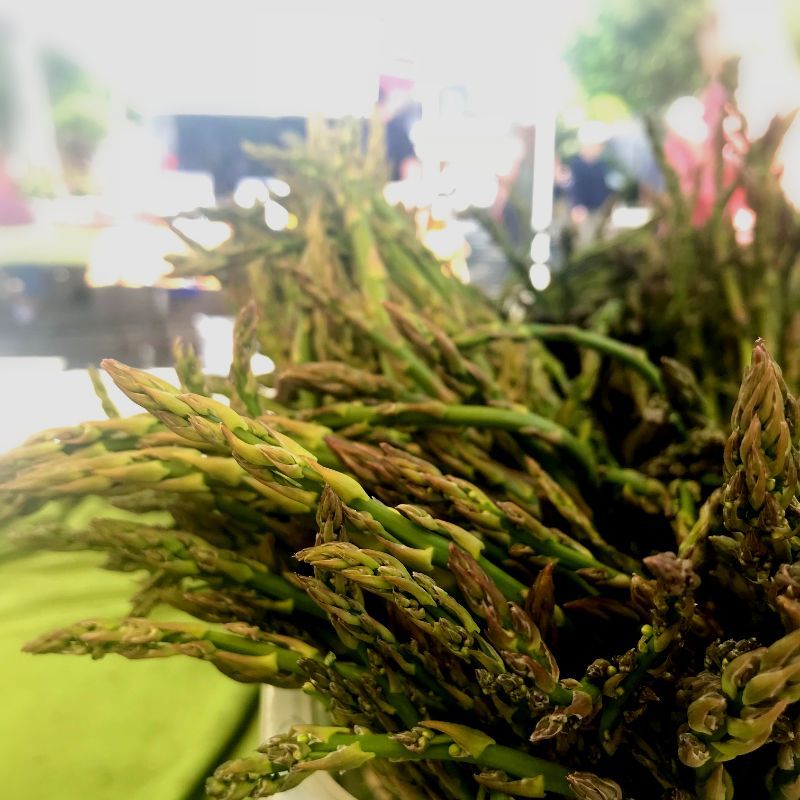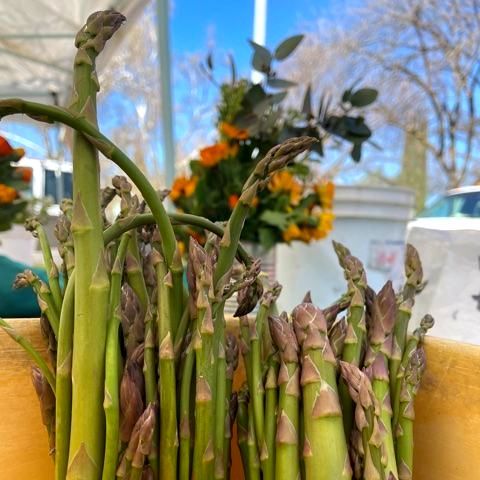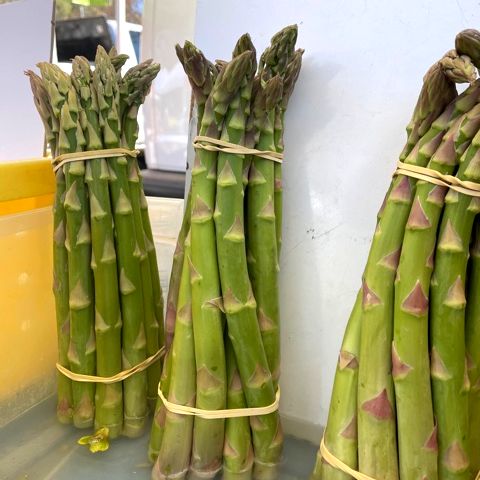If you’ve been a follower of this newsletter for a while, it’s no secret that we play favorites every spring – Asparagus, the best part of spring produce (don’t tell the other veggies), is in season now at the Saturday Morning Farmers’ Market!
Prized for its grassy, tender, and sweet stalks, we can’t get enough! It is best when picked fresh, and even better when local, as travel can be hard on this sweet little veggie. Choosing the right bundle is less tricky than you’d think. Despite common belief, the size of the spear doesn’t indicate the quality or flavor – thin asparagus is just less mature than it’s thicker counterpart. What you should be looking for is closed, compact tips, bright green or violet tinged spears, and firm stems. Another fun trick: when squeezed, the bunch should squeak!
Keep reading for our some interesting facts and recipes that highlight this tasty spring treat!
- 4c82f675 0870 4d94 92ea a697a073b85e
Delicious AND Nutritious!
This bright green veggie is packed with lots of good-for-you stuff! It’s a great source of fiber, folate, and vitamins A, C, E and K. It is also a particularly rich source of antioxidants and glutathione, a detoxifying compound that helps break down carcinogens and other harmful compounds like free radicals. Eating asparagus may help protect against and fight certain forms of cancer, such as bone, breast, colon, larynx and lung cancers.
Asparagus also contains chromium, a trace mineral that enhances the ability of insulin to transport glucose from the bloodstream into cells.
This superfood can be eaten raw or cooked, so get a hold of some and get creative this spring!
- 7bf463c5 c244 466f b69f 66cd99c4665e
- 286b9b99 33df 49ae a8a1 b45544e781da
Prep It!
Asparagus is best cooked the day it’s purchased, but it can be kept in the refrigerator for up to five days. Wrap the bottoms of the stalks in a damp paper towel and place in a paper bag; you should store it in the crisper drawer for the best results. You can also set it up right (cut ends down) in a glass dish filled with about an inch of water.
Once you’re ready to cook, hold the bunch upside down and gently swish it under cold water—the tender tips can be sandy. Next, snap off the tough woody bottoms. The easiest way is to bend the stalk at the natural breaking point (often where the color changes from white to green), about an inch or two inches from the base. Whether you decide roast, grill, steam, sauté, stir-fry, etc., your asparagus is now ready to rock!
- 22b376c5 65ca 44e7 a113 7469c183622c
Fun Facts!
- Asparagus was first grown in Greece nearly 25,000 years ago. The name asparagus comes from the Greek language, and means “sprout” or “shoot.”
- The people of Ancient Greece and the Roman Empire used asparagus medicinally, for preventing bee stings and soothing toothaches.
- Asparagus is one of the three common vegetables in North America (along with rhubarb and artichokes) that comes from a perennial plant.
- Asparagus lies dormant in winter, but emerges in spring and can grow up to six inches a day!
- It takes three years from seed to be harvestable, but once it’s ready, it can be cropped for 15-20 years!
- Though green is the most common color in American markets, 55 percent of asparagus around the world is white.
- White asparagus is not genetically induced in any way, but it is one of the most labor intensive vegetable to grow! It is usually grown under ground so it is not exposed to light.
- 80% of the asparagus grown in the United States is grown right here in California!




